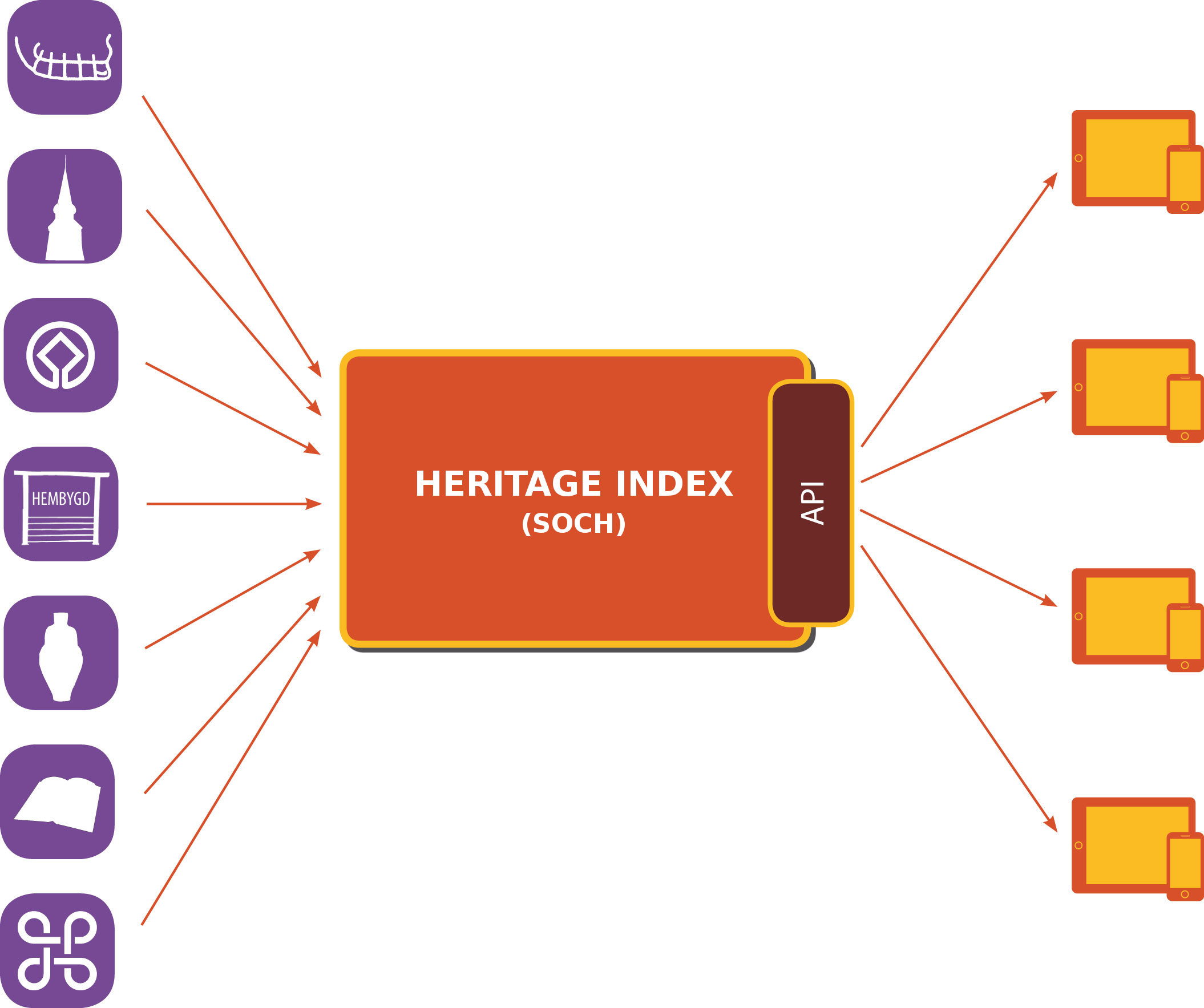
SOCH – Swedish Open Cultural Heritage (“K-Samsök” in Swedish) is a national aggregator of heritage data developed and maintained by the National Heritage Board. It harvests metadata from databases of cultural heritage institutions in Sweden, indexes it, and publishes it in a format (Open API) allowing third parties to use the data to develop web applications to make the information accessible in new ways and with new combinations. SOCH is a free web service that any Swedish institution with a digitalised collection can join, from the national museums to municipal archives to local non-profit organisations. Collections can include anything from artefacts to art works, biological samples to historical buildings, ancient manuscript to film recordings. SOCH also harvests metadata from the Historic Environment Record with information about ancient and historical sites, and archaeological projects.
SOCH indexes the metadata and maps it to a common data model so that users can search across the many different databases even if the terminologies vary between them. SOCH also creates unique and persistent identifiers in the form of links (URL) to the source material. The content providers maintain full power over their data, what is made visible and which licenses apply to media objects. SOCH does not alter the data, it is merely a way of making them findable, accessible, interoperable, and re-usable (i.e., FAIR). The full content of SOCH, which exceeds 10 million objects, can be viewed in the search interface Kringla, but there are many other applications built using the SOCH API which present selections of the data in new and imaginative ways, in combination with data from other resources, for instance runic inscriptions, churches, genealogical materials, and crowdsourced information about cultural historical sites. SOCH also acts as the national aggregator delivering data to the Europeana platform, making the collections accessible on a global scale.
SOCH’s content is constantly growing, as more data providers join the service and as more collections are digitalised. The old data model has not been updated to reflect the new international standards for heritage, archaeology, and science. There is also a need for output formats that are more useful for data driven research questions than API. To help make Swedigarch an infrastructure that can meet the needs of future research, the National Heritage Board is developing a completely new data model and version of SOCH that allows both for a low threshold of entry for small institutions, and for mapping complex and rich metadata from archaeological collections and research databases. The aim is to make the simple easy, and the complex possible.
